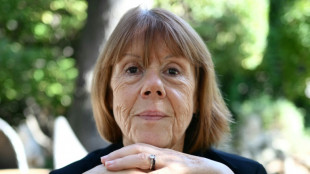Strong quake in central Philippines kills 31 as search ongoing
Rescuers searched collapsed buildings for survivors Wednesday after a powerful 6.9 magnitude earthquake jolted the central Philippines, killing at least 31 people on the island of Cebu with fears the toll could rise.
The shallow quake struck at 9:59 pm (1359 GMT) Tuesday off the island's northern end near Bogo, a city of 90,000 people, according to the US Geological Survey (USGS).
Cebu provincial governor Pamela Baricuatro said the Cebu provincial hospital in Bogo recorded 25 deaths from the city alone.
"Because of the high volume of patients with serious injuries, the medical staff tended to some of them outside the hospital," Baricuatro posted on her official Facebook page.
Rescuers earlier tallied six more deaths elsewhere in the province, while the National Disaster Risk Reduction and Management Council listed 147 injured across the central islands, where 22 buildings were damaged.
Dramatic footage filmed by residents and widely shared on social media showed an old Catholic church on Bantayan island near Cebu adorned with a string of light bulbs swaying wildly shortly before its belfry tumbled into the courtyard.
"I heard a loud booming noise from the direction of the church then I saw rocks falling from the structure. Luckily no one got hurt," Martham Pacilan, 25, who was nearby when the belfry collapsed, told AFP.
Local television showed riders being forced to dismount from their motorcycles and hold onto the railings for dear life as a Cebu bridge violently rocked.
- 'The mall started shaking' -
Buildings were damaged as far as Cebu city, 100 kilometres (60 miles) south of Bogo, where online shoe merchant Jayford Maranga, 21, hid under a restaurant table to avoid being struck by the collapsing metal ceiling of a shopping mall.
"My friend and I ate at the food court near closing time, and then, bang! It was as if the Earth stopped spinning. And then the mall started shaking," Maranga told AFP, adding his friend was slightly injured.
The Cebu provincial government has put out a call on its official Facebook page for medical volunteers to assist in the aftermath of the quake.
"There could be people trapped beneath collapsed buildings," provincial rescue official Wilson Ramos told AFP.
Overnight recovery efforts were hampered by the dark as well as aftershocks, he added.
The rescue effort proceeded all night even as the Philippine Institute of Volcanology and Seismology said the region was being rocked by 379 aftershocks.
The quake caused power lines to trip, leading to outages across Cebu and nearby central islands, though power was restored shortly after midnight in Cebu and four other major central islands, the National Grid Corp. of the Philippines said in an updated advisory.
The Cebu provincial government reported a commercial building and a school in Bantayan had collapsed, while a fast food restaurant in Bogo was heavily damaged.
Agnes Merza, 65, a carer based in Bantayan, said her kitchen tiles had cracked.
"It felt as though we would all fall down. It's the first time I have experienced it. The neighbours all ran out of their homes. My two teenage assistants hid under a table because that's what they were taught in the boy scouts," she told AFP.
A number of village roads also sustained damage.
The USGS had reported a magnitude reading of 7.0, before revising it down, while the Pacific Tsunami Warning Center said there was no tsunami threat from the earthquake.
Quakes are a near-daily occurrence in the Philippines, which is situated on the Pacific "Ring of Fire", an arc of intense seismic activity stretching from Japan through Southeast Asia and across the Pacific basin.
Most are too weak to be felt by humans, but strong and destructive ones come at random, with no technology available to predict when and where they might strike.
H.Zampino--INP

 London
London

 Manchester
Manchester
 Glasgow
Glasgow
 Dublin
Dublin
 Belfast
Belfast
 Washington
Washington
 Denver
Denver
 Atlanta
Atlanta
 Dallas
Dallas
 Houston Texas
Houston Texas
 New Orleans
New Orleans
 El Paso
El Paso
 Phoenix
Phoenix
 Los Angeles
Los Angeles

